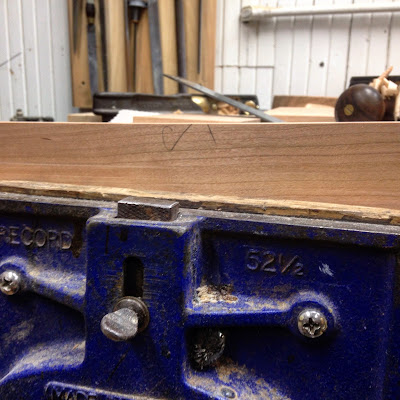When I started into woodworking I wanted the best tools around. But realistically quality tools cost money, as we all know. Luckily I was fortunate to work at Woodcraft from the year 2000 through 2004. Lucky is somewhat questionable if I am going to be honest. Lets just say the discount I got prevented me from bringing home a penny of my earnings. I spent all my money on what ever tool(s) I could afford and thought I needed and made some poor choices. Sadly it took a while to realize less means more. Early on I also thought buying new was far better than at flea markets. Boy was I wrong!
Fast forward to 2016 and here I am selling off excess amount of tools. There are days I feel that I am hoarder. Thank goodness that is over and done with. It is crazy how much stuff I've collected.What was I thinking!
Over the years there has been an uprising of tool makers. Each one making some amazing tools and accessories. Where were these guys when I first started! While I would love to buy everything each tool maker is making, I realistically can't. I am a full-time maker & restorer of furniture and I need to make proper decisions on what I truly need. The hoarding has stopped and I am tired of spending money.
This leads me to the chisels showcased above, Veritas PM-V11's. I have used many chisels old and new, from Witherby, Greenlee, James Swan, Butcher, Stanley, Stanley Everlast, Marples (Boxwood handle), E.A. Berg, Marples Blue Chip, Chapman, Sorby, Pfiel, and Union. From all of these chisels none of them can compare to the Lee Valley PM-V11 chisels.
These chisels are well balance, easy to sharpen, and hold an edge like no other chisel I have ever owned. Now I haven't owned any other modern made chisels ( Lie Nielsen or Blue Spruce). But from what I have owned the PM-V11 chisels are hands down the best. The edge retention is amazing. The edge of the chisel holds 3x's longer than A-2.
My sharpening process is simple. I hollow grind on a baldor slow speed grinder with a 6 inch wheel at 27 degrees. I use a honing guide on water stones. I also strop every so often.
Why 27 degree bevel? I use hard and softwood regularly and 27 degrees is a good working angle.
Why use a honing guide? Simply because I know how to free hand sharpen which everyone should master. But also my hands are worked hard and a honing guide helps rest my hands.
Why waterstones? Fast cutting. But I do own oilstones and diamond stones for other forms of sharpening.
What kind of water stones? Sigma and Shapton.
Really the message I am trying to share with you is save your pennies and buy the best set of chisels once. You will be happy you did.
Cheers,
FR



































































